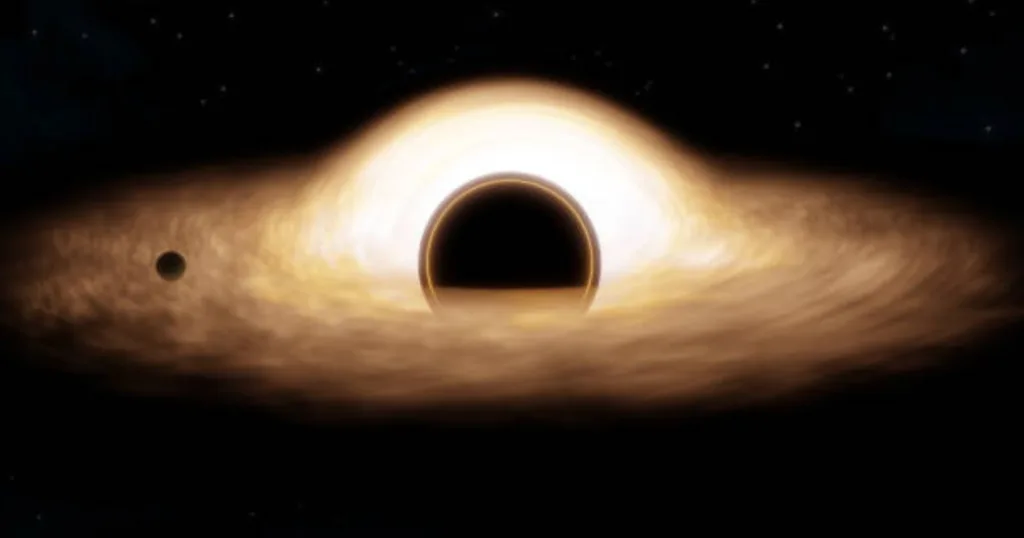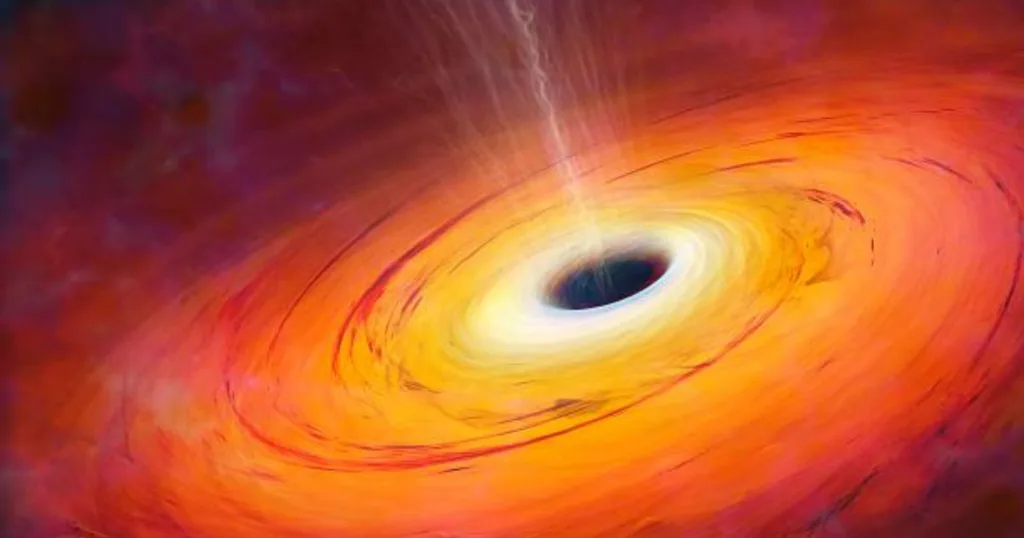How big is a black hole compared to Earth?: Black Hole: You all must have heard its name somewhere or the other. The black hole is one of the most interesting and mysterious things in our universe. The black hole is such a thing that can hold many things inside itself.
The pull of gravity is so strong that it can pull many things inside it from very far away, but to date, people have not found out how black holes originate, how black holes are formed, and where they come from today. We are going to give you answers to all these things because the black hole is such a thing about which we know less,
The black hole keeps revealing its with time and scientists still know a lot about the black hole. They are doing more research and they get to know more about many things. A black hole is such a thing that it can contain all the light of the universe inside it. The size of a black hole is twice the size of the things inside it. So let’s start with what a black hole is
Understanding Black Holes
Black holes were first discovered by physicist John Mitchell in 1783; scientists did not begin to seriously consider their existence until the early 20th century. The term “black hole” was coined by physicist John Wheeler in 1967. A black hole is formed by the collapse of massive stars, and its event horizon is a point of no return, beyond which anything that comes too close will be sucked into the black hole. The presence of a black hole is often revealed by its influence on nearby matter, such as the orbit of stars or the emission of radiation.
Black holes are difficult to observe directly, as they are invisible because nothing, not even light, can escape their gravitational pull. However, their presence can be inferred by indirect means such as studying the effect of their gravity on nearby objects.

Measuring Black Hole size
Measuring the size of a black hole is a bit difficult because the size of a black hole changes with time black holes are of different sizes, some are small black holes formed by the collapse of stars and some are huge black holes formed in galaxies. The size of a black hole is usually measured by the Schwarzschild radius, which indicates the distance from its center to its horizon.
The size of a black hole is quite large. Black holes contain more things than their size. Have power but if we compare the Earth with the black hole, then the radius of our Earth is about 6,371 kilometers (3959 miles) which makes it much smaller than this black hole. How many planets are like us and how many planets are we in the black hole? The kind that appears much smaller than a black hole
Small Black Holes:
Small black holes, also known as stellar-mass black holes, are fascinating astronomical objects formed from the collapse of massive stars. When a star exhausts its nuclear fuel, it can no longer withstand the inward pull of gravity, leading to a catastrophic collapse. If the remaining core of the star is massive enough, it collapses into a singularity, a point of infinite density, surrounded by an event horizon, beyond which nothing, not even light, can escape. These black holes typically have masses ranging from about 3 to 100 times that of the Sun.
Despite their small size compared to supermassive black holes found at the centers of galaxies, stellar-mass black holes can have profound effects on their surroundings. They can distort spacetime, creating gravitational lensing effects, and can also emit X-rays if they are in a binary system with a companion star. When matter from the companion star falls into the black hole’s gravitational field, it forms an accretion disk that heats up and emits intense radiation before crossing the event horizon.
Supermassive Black Holes:
Supermassive black holes are incredibly massive celestial objects found at the centers of most galaxies, including our Milky Way. These black holes are millions to billions of times more massive than the Sun. Their enormous gravitational influence plays a crucial role in shaping the evolution of galaxies and the distribution of matter within them.
While the exact mechanisms of their formation are still under investigation, supermassive black holes are believed to have grown over time through the accretion of surrounding gas and the mergers of smaller black holes. They are often surrounded by a region of space called an accretion disk, where matter from their surroundings spirals inward before crossing the event horizon—the boundary beyond which nothing can escape the black hole’s gravitational pull.

Conclusion
In today’s time, there are so many black holes in our universe that we do not know which black hole is how big and how small. The Black hole is such a thing that the less we know about it because with time the black hole becomes smaller.
We keep getting more information about holes. The black hole is such a thing that holds within itself the power of the entire universe. Its gravitational pull is so strong that it can attract other things from very far away. It is called black. Anything can go inside the hole but it is very difficult to come out because its gravity is so dangerous that it does not allow you to come out.
It also blocks the sunlight in the universe. Black hole. About black holes. Our scientists can and are making many more discoveries and they come to know new things. Today we have provided you with a lot of knowledge related to black holes in this article which will be useful for you. Thank you.
